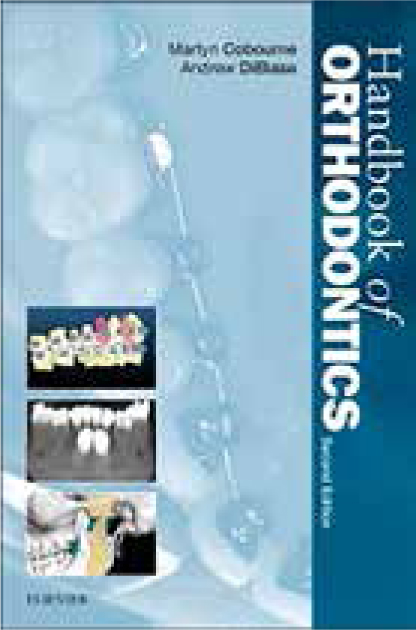Article
Handbook of Orthodontics

Handbook of Orthodontics, written by Professor Martyn Cobourne and Dr Andrew DiBiase, is a compact textbook of orthodontics aimed at practising orthodontists and students of orthodontics. First published in 2010, it has recently been updated for a second edition.
This book covers a broad range of topics relating to orthodontics, ranging from craniofacial genetics through to diagnosis and treatment of malocclusion.
The content is particularly appropriate for trainees in their first three years leading to the Membership in Orthodontics examination. The layout and description of diagnosis and treatment of malocclusion is logical, succinct and easily understandable. Owing to its size, it is not a daunting prospect to read, which is a great benefit to trainees struggling to grasp the intricacies of orthodontics in the early years. The photographs and diagrams throughout the book are of a very high quality and help to illustrate points and explain the more complex themes.
Special mention should also go to the genetics, craniofacial development and growth sections. Considering the length of the book, these sections make up a significant proportion of the text, which may initially put some readers off. These are large and complex topics which can be daunting to many orthodontists. However, the level of detail and descriptions are pitched at the perfect level, breaking each topic down to make it more easily understandable.
Orthognathic treatment and craniofacial syndromes, including clefting, are also covered in the book. However, the level of detail is insufficient for consultant orthodontists or higher trainees preparing to sit consultant examinations. Considering the size and scope of the text and the intended audience this is understandable.
The second edition of the book includes an additional focus on research evidence. ‘Where is the evidence’ boxes have now been included which summarize the main research in a particular field. This helps the reader understand the evidence behind opinions within the text. An additional chapter has also been included describing evidenced-based orthodontics, including levels of evidence.
This is an essential book for all orthodontists in training leading to the Membership in Orthodontics examination. It is also a good read for practising orthodontists wanting a concise book covering diagnosis and treatment planning informed by the latest up-to-date research evidence.
